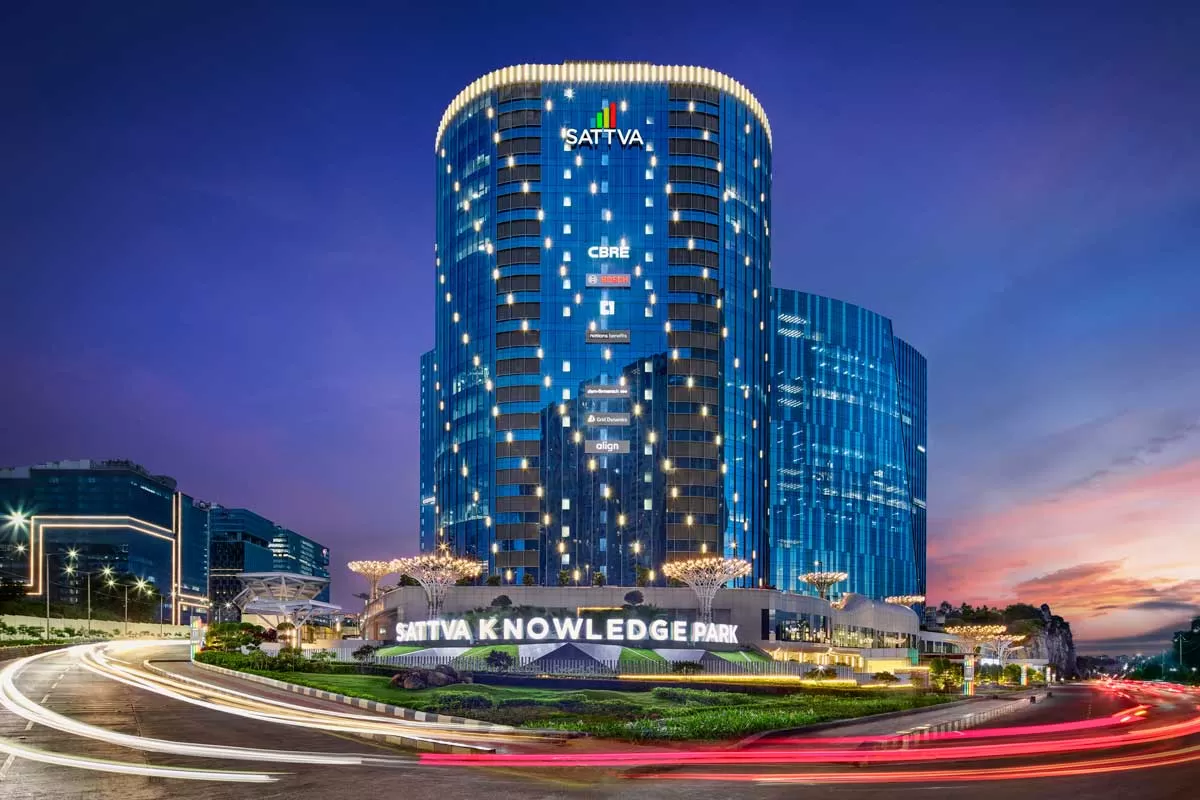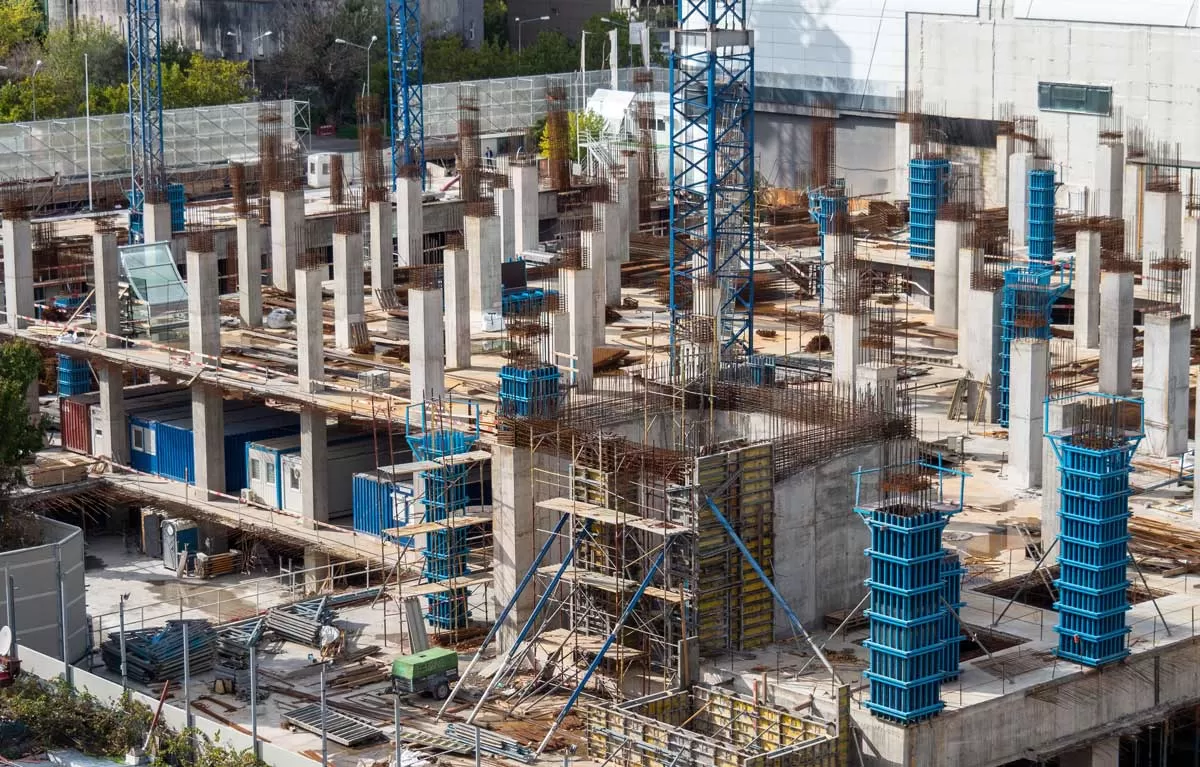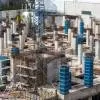Supply chain diversification will continue
to create demand, leading to an increase in leasing activity. Demand centres
would witness more robust leasing as several occupiers prefer to locate their
warehouses closer to consumption hubs to reduce transportation costs, writes Anshuman Magazine, Chairman & CEO -
India, South-East Asia, Middle East, and Africa, CBRE.
The Covid-19 pandemic severely impacted the
consistency of the supply chain. Continued focus on multi-sourcing and
near-shoring strategies emerged as an effective and more efficient model
compared to conventional supply chain management. Diversification of transport
networks and increasing resilience on multi-modal transport, coupled with the
upgradation of modern facilities to enhance storage efficiencies and deployment
of technology to improve operational output, are emerging as some of the key
growth drivers in the sector.
The warehousing and logistics sector has
emerged as a crucial asset in India’s real estate market, given its criticality
for supply chain management, including receiving and storing goods, packaging,
and dispatching for seamless delivery.
As we evolve towards becoming a multipolar
delivery system, there is a greater need for investments in factories,
warehouses, and machinery to accommodate the overhaul of supply chains. In the
last 5-7 years, the warehousing sector has undergone an extensive evolution,
from being mere go-downs and basic fit-for-all shelters, warehouses today are
transitioning to high-tech infrastructures that are smart, intelligent, green,
and tailor-made technology-driven solutions.
The massive boom in E-commerce for quick
delivery of food, goods, and services, coupled with the rapid penetration in
e-commerce, specially expanding to tier 2 and 3 cities, has led to a surge in
demand for Infrastructure and Logistics (I&L) spaces, which is driving
growth for this sector. According to a report by CBRE, leasing activity in
India’s industrial & logistics sector surged to 19.1 million sq ft across
eight major cities during the first half of 2023 (Jan-Jun), marking a
substantial 35 per cent year-on-year increase.
The
report also underscored the dominance of third-party logistics (3PL) players in
leasing activity, capturing a substantial 43 per cent share during Jan-June.
This trend was attributed to outsourcing supply chain processes by e-commerce,
retail, and manufacturing entities to 3PL firms, enabling them to optimize
storage needs, enhance flexibility, and curtail operational costs.
The Government’s initiatives, such as the
Production Linked Incentive (PLI) that led to a surge in Third-party logistics
(3PL), manufacturing, and retail sectors, are also creating a warehousing and
logistics boom in metros and small towns across the country.
The
tectonic shift to tier 2 cities!
Rising urbanisation, increase in per capita
income, supply chain revamp in the post-pandemic era, and e-commerce
penetration in tier 2 cities are likely to further boost the I&L sector
activity in these emerging markets. The rapid urbanisation and
industrialisation industrialisation witnessed in tier 2 and 3 cities have also led to a growing
need for warehousing facilities to support various industries, including
e-commerce, retail, manufacturing, and logistics.
Some of the key tier 2 cities such as Chandigarh,
Jaipur, Lucknow, Ahmedabad, Indore, Coimbatore, Kochi, Thiruvananthapuram,
Visakhapatnam, and Bhubaneswar as witnessing an overhaul, fulling growth for
the I&L sector. Compared to metro cities, these cities offer land at
optimum costs, have abundant availability of skilled and semi-skilled talent,
and offer investors a much-lowered operational cost.
A case in point is the Lucknow-Kanpur
highway cluster, wherein the entire region currently has 5.2 million square
feet of warehouse stock with about 1.4 million square feet of Grade A supply in
the pipeline. The stretch between Lucknow and Kanpur, which is rapidly emerging
as a warehouse hub, has already seen investments of `4 billion over the last
five years by leading players such as Amazon, Mondelez, and Flipkart. Further,
this has enabled employment generation with approximately 70,000 jobs in the
region directly and an additional 35,000 jobs in allied activities such as
transportation and external vendors.
Clearly, tier 2 cities, with their lesser utilised
resources, are the next big opportunity for majority institutional investors.
Owing to the evolved functional nuances,
traditional warehouses must bow out of the picture, ushering in automated
warehouses that enhance operational efficiency, reduce costs, and facilitate
the growth of the manufacturing and logistics sectors.
Emerging
trends and technological advancements
The emergence of digital transformation has
ushered in a new era of innovation and efficiency within the logistics domain.
Smart warehousing tech has seen rapid uptake in recent years, allowing
occupiers to improve efficiencies, augment order-handling capacities and
resolve labour shortages.
Furthermore, given the quality developments
coming up across major cities, it has become accessible for occupiers to
implement technology across I&L facilities. Several emerging technologies
such as Artificial Intelligence (AI), Block Chain,
Big Data and the Internet of Things (IoT)
are already being implemented across the supply chain to restructure various
aspects of logistics operations and enhance their resilience.
Vertical storage and safety standards of
incoming supply will play a critical role in occupiers’ decision-making process
in the future. The evolving requirements of occupiers to enhance storage
efficiencies of I&L spaces led developers to increase the ‘clear height’ of
developments in their upcoming parks. Forthcoming I&L parks are also
expected to feature tech-enabled standard specifications, including sufficient
loading/unloading bays, power backups, ridge ventilators, thermal insulations,
and fire sprinklers.
Net inference is that automation is the key
to transforming warehouses from merely being storage spaces to smart and
efficient distribution hubs. India’s warehousing industry continues to witness
a massive transformation with the emergence of modern storage facilities that
comply with international-grade specifications and facilities.
India’s
warehousing market expected to swiftly grow
The future of India’s I&L sector holds
great potential as it is being shaped by a combination of emerging trends,
technological innovations, and government support. This sector is expected to
have a significant impact on India’s economic growth by facilitating
connections between businesses and markets, ultimately contributing to the
country’s development.
Supply chain diversification will continue
to create demand, leading to an increase in leasing activity. Demand centres
would witness robust leasing as several occupiers prefer to locate their
warehouses closer to consumption hubs to reduce transportation costs. Another
trend shaping the I&L sector’s growth is the heightened need for speedy
deliveries, which will foster in-city warehousing demand. This trend is
expected to fuel the growth of multilevel warehouses in the suburbs of tier 1
locations.
In summary, India’s I&L sector is
crucial for economic growth, evolving through ESG principles, cold chain
innovations, and advanced technologies. It can reshape trade, enhance India’s
global presence, and contribute to overall development. In our interconnected
world, it connects businesses to markets, fostering prosperity through
resilient, sustainable logistics networks and collaborative efforts.
About
the author:
Anshuman Magazine is the Chairman & CEO
- India, South-East Asia, Middle East, and Africa for CBRE. Based in New Delhi,
he oversees operations for 25 countries and over 50 offices and affiliates
across geographies. With over 25 years at CBRE, Magazine grew the India
business from a handful of employees to over 16,000-strong today.


















